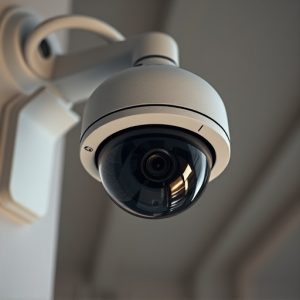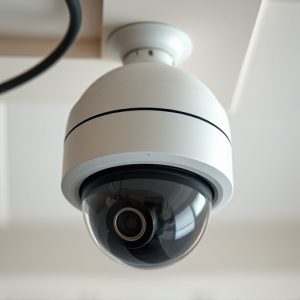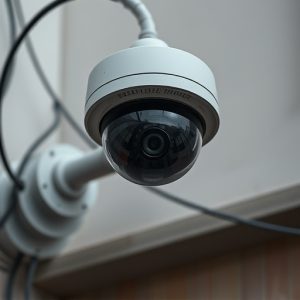Fake Dome vs Bullet Cameras: Illuminating Your Security with Integrated Lights
This text compares Fake Dome and Bullet security cameras, highlighting their distinct advantages. Fa…….
This text compares Fake Dome and Bullet security cameras, highlighting their distinct advantages. Fake Domes are discreet with a design mimicking regular light fixtures, ideal for residential settings. Bullet cameras offer superior optical quality, adjustable angles, night vision, and a cylindrical shape, making them robust for commercial use. Integrating lights into security cameras enhances visibility in low-light conditions and acts as a deterrent to crime. The optimal choice depends on specific security needs, desired discretion, placement, lighting, and budget. For outdoor areas with fluctuating light, Bullet cameras are preferable; for discreet indoor setups, Fake Domes are better suited.
In today’s security-conscious world, choosing the right surveillance system is paramount. This guide explores the multifaceted landscape of security cameras, focusing on two dominant types: Fake Dome and Bullet cameras. We’ll delve into their distinct features, highlighting how each excels in specific scenarios. Understanding these differences is crucial when deciding between a Fake Dome or Bullet Camera for your home or business. By the end, you’ll be equipped to make an informed choice, enhancing your safety measures effectively.
- Understanding Fake Dome and Bullet Cameras: Features and Differences
- Benefits of Using a Security Camera with Integrated Lights
- Choosing the Right Setup: Factors to Consider for Your Home or Business
Understanding Fake Dome and Bullet Cameras: Features and Differences
Fake Dome and Bullet cameras are two common types of security camera designs, each with unique features catering to different user needs. In terms of aesthetics, Fake Dome cameras offer a more discreet appearance as their design mimics a regular light fixture, making them blend seamlessly into various environments. This stealthy approach is particularly appealing for installations requiring minimal visual impact without compromising on surveillance capabilities.
On the other hand, Bullet cameras, as the name suggests, have a cylindrical shape that projects a clear and focused view. They are often favored for their excellent optical quality and advanced features like adjustable angles and night vision capabilities. While they might not blend into the environment as seamlessly as Fake Dome cameras, Bullet cameras provide robust performance and are ideal for installations needing enhanced visibility and detail. The choice between these two depends on the specific security needs, desired level of discretion, and the environmental factors of the area to be monitored.
Benefits of Using a Security Camera with Integrated Lights
Integrating lights into security cameras offers numerous advantages, making them a superior choice over traditional Fake Dome or Bullet Cameras. One of the key benefits is enhanced visibility and clarity during low-light conditions. The integrated lighting ensures that the camera can capture high-quality footage even in dimly lit environments, eliminating blind spots that might be exploited by potential intruders. This feature is particularly valuable for outdoor installations where natural light fluctuates throughout the day.
Moreover, security cameras with built-in lights provide a more effective deterrent to crime. The visible presence of a camera illuminated by its own lighting can deter would-be criminals, as it signifies a higher level of surveillance and increases the risk of detection. This active approach to security sets these integrated systems apart from passive cameras, making them a smarter investment for homes, businesses, and public spaces alike.
Choosing the Right Setup: Factors to Consider for Your Home or Business
When setting up a security system, deciding between a Fake Dome and a Bullet camera is a key choice. Each offers unique advantages. Fake Dome cameras blend seamlessly into their surroundings, disguised as regular light fixtures, making them ideal for residential areas where aesthetics are important. On the other hand, Bullet cameras, with their compact design and clear vision, are often preferred in commercial settings due to their robust build and wide field of view.
Factors like placement, lighting conditions, and budget play a significant role. For outdoor spaces with varying light levels, Bullet cameras’ superior low-light performance can be beneficial. Conversely, Fake Dome cameras might be more suitable for well-lit indoor areas where discretion is the primary concern. Ultimately, understanding your environment and needs will help determine whether a Fake Dome or Bullet camera better suits your security setup.
In conclusion, both fake dome and bullet cameras offer robust security solutions, but each excels in unique areas. Fake dome cameras provide a sleek, unobtrusive design ideal for indoor spaces, while bullet cameras stand out for their durability and wide-angle lenses, making them suitable for outdoor surveillance. When deciding between the two, consider your specific needs, environmental factors, and desired level of discretion to choose the best fit—whether it’s a fake dome or bullet camera—for enhancing your security system.


